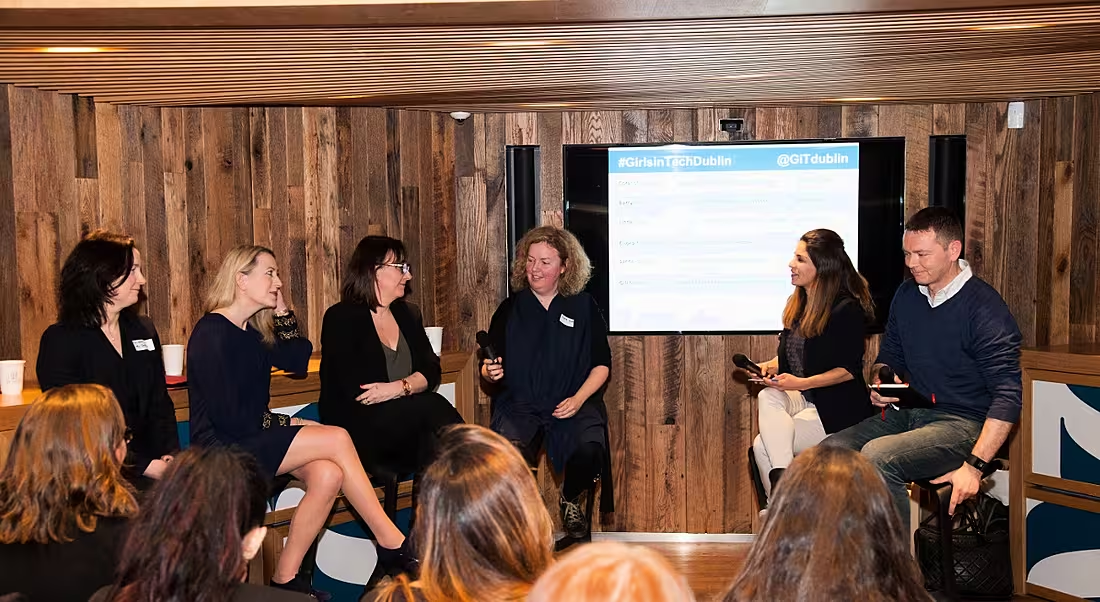The launch of Girls in Tech Dublin took place at Bank of Ireland’s Grand Canal Square start-up workbench.
The gender gap seems to be a never-ending discussion, particularly in the tech sector.
With the top companies in the world still showing a huge gender gap problem, we’ve never needed more initiatives and organisations to narrow that gap.
Girls in Tech is a global non-profit focused on the engagement, education and empowerment of girls and women who are passionate about technology.
The initiative was founded in 2007 by Adriana Gascoigne to help women advance their careers in STEM.
Helping to close the gap
Ten years later, Girls in Tech has multiplied around the world and 20 March marked the opening of the 61st chapter of the organisation, which landed in Dublin.
“We want to help close this gap,” said Coral Movasseli, managing director of Girls in Tech Dublin. “Women are still not equally represented in tech companies in Dublin.”
The event began with opening remarks from Movasseli followed by words from keynote speaker, Linda Doyle, director of the Connect research centre.
“It’s always about the gap, the gap of where women should be and where they are now,” Doyle said in her opening remarks.
Girls in Tech sets out to empower and engage women with programmes and events across the 61 chapters around the world. “This is not a gender war, it’s a human approach,” said Movasseli.
Doyle’s keynote led into a panel discussion, with Doyle alongside Gill Murphy, head of base management at Bank of Ireland; Sarita Johnston, Enterprise Ireland’s female entrepreneurship manager; and Cliona McCusker, managing director of Accenture Technology.
The panel identified confidence as a major barrier for women in tech. “Females have the same levels, if not higher levels, than men,” said Johnston. “But, when it comes to looking for finance, we’re less inclined to apply for the maximum funding.”
The importance of role models
Johnston also said that research conducted by Enterprise Ireland shows that a woman who knows an entrepreneur is four times more likely to become an entrepreneur herself, whereas men are only twice as likely.
“The impact of role models on women is critical,” she said. McCusker reiterated this, saying: “You can’t be what you can’t see.”
For women thinking about entering or re-entering the tech sector, the panel advised looking at what you might be most interested in and saying yes to things more often. “I wasn’t afraid to put my hand up to try something different,” said Murphy.
Addressing the dangers of the gender gap, Doyle worried about the possibility of making the gap even bigger by not understanding the importance of technology and the diversity that is needed.
“There is no such thing as neutral design,” she said.
The artist’s way
Doyle also said that artists can be an essential part of bringing diversity in technology forward as they can often see the gaps better than the tech professionals who are too close. She added that they can also embrace things faster than other professionals.
“A lot of the artists I work with are fearless with new technologies.” She said that engineers and tech professionals including her can be reserved about approaching new technologies until they familiarise themselves with it, while artists are more likely to dive straight in.
Speaking about confidence, McCusker also implored women not to assume they need years of tech experience to apply for tech jobs, because at the base of most roles is problem-solving skills. “It’s all about the generic skills,” she said. “Generally, people can pick up the hard skills later.”
Updated 5.02pm, 22 March 2017: This article was amended to include Cliona McCusker’s job title as managing director of Accenture Technology.




